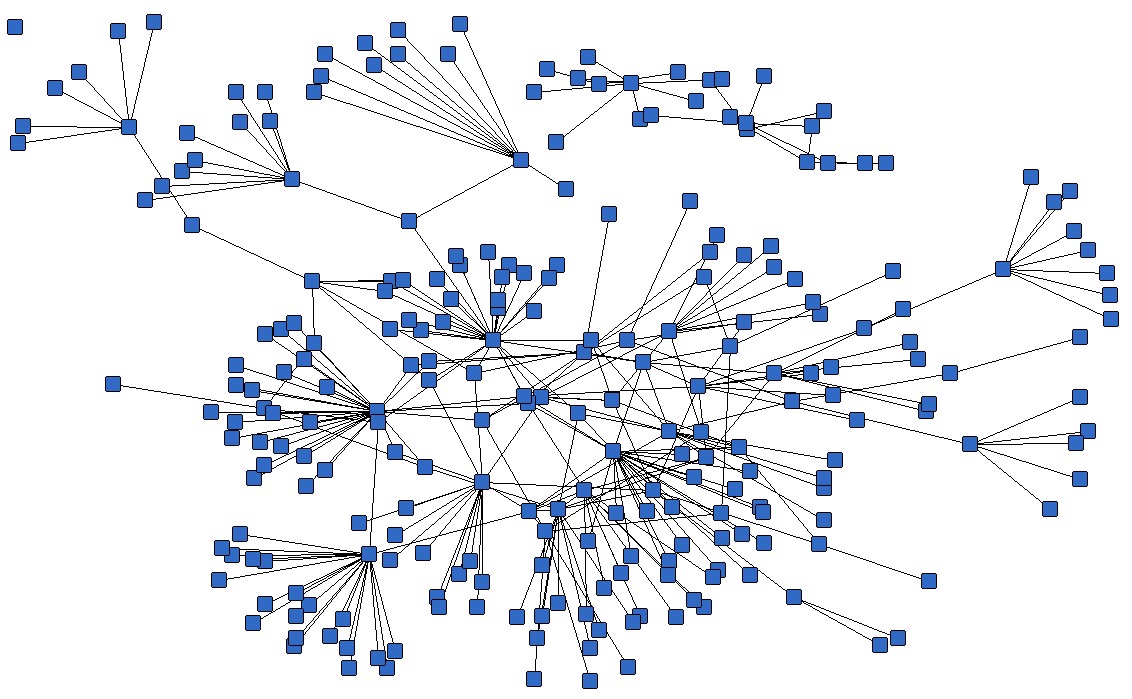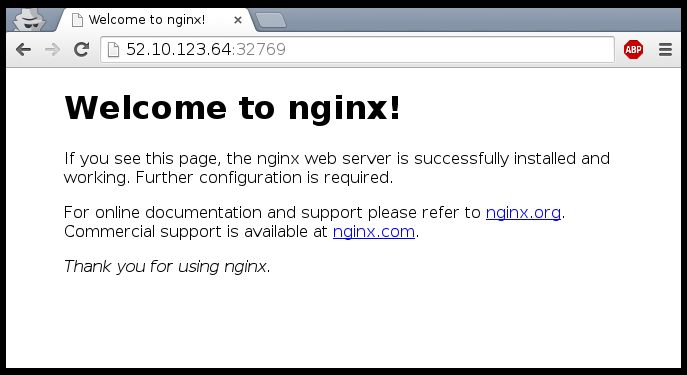Container networking basics
- Objectives
- A simple, static web server
- Finding our web server port
- Connecting to our web server (GUI)
- Connecting to our web server (CLI)
- How does Docker know which port to map?
- Why are we mapping ports?
- Finding the web server port in a script
- Manual allocation of port numbers
- Plumbing containers into your infrastructure
- Finding the container's IP address
- Pinging our container
- Section summary

Objectives
We will now run network services (accepting requests) in containers.
At the end of this section, you will be able to:
Run a network service in a container.
Manipulate container networking basics.
Find a container's IP address.
We will also explain the different network models used by Docker.
A simple, static web server
Run the Docker Hub image nginx, which contains a basic web server:
$ docker run -d -P nginx
66b1ce719198711292c8f34f84a7b68c3876cf9f67015e752b94e189d35a204e
Docker will download the image from the Docker Hub.
-dtells Docker to run the image in the background.-Ptells Docker to make this service reachable from other computers.
(-Pis the short version of--publish-all.)
But, how do we connect to our web server now?
Finding our web server port
We will use docker ps:
$ docker ps
CONTAINER ID IMAGE ... PORTS ...
e40ffb406c9e nginx ... 0.0.0.0:32768->80/tcp ...
The web server is running on port 80 inside the container.
This port is mapped to port 32768 on our Docker host.
We will explain the whys and hows of this port mapping.
But first, let's make sure that everything works properly.
Connecting to our web server (GUI)
Point your browser to the IP address of your Docker host, on the port
shown by docker ps for container port 80.

Connecting to our web server (CLI)
You can also use curl directly from the Docker host.
Make sure to use the right port number if it is different from the example below:
$ curl localhost:32768
<!DOCTYPE html>
<html>
<head>
<title>Welcome to nginx!</title>
...
How does Docker know which port to map?
There is metadata in the image telling "this image has something on port 80".
We can see that metadata with
docker inspect:
$ docker inspect --format '{{.Config.ExposedPorts}}' nginx
map[80/tcp:{}]
This metadata was set in the Dockerfile, with the
EXPOSEkeyword.We can see that with
docker history:
$ docker history nginx
IMAGE CREATED CREATED BY
7f70b30f2cc6 11 days ago /bin/sh -c #(nop) CMD ["nginx" "-g" "…
<missing> 11 days ago /bin/sh -c #(nop) STOPSIGNAL [SIGTERM]
<missing> 11 days ago /bin/sh -c #(nop) EXPOSE 80/tcp
Why are we mapping ports?
We are out of IPv4 addresses.
Containers cannot have public IPv4 addresses.
They have private addresses.
Services have to be exposed port by port.
Ports have to be mapped to avoid conflicts.
Finding the web server port in a script
Parsing the output of docker ps would be painful.
There is a command to help us:
$ docker port <containerID> 80
32768
Manual allocation of port numbers
If you want to set port numbers yourself, no problem:
$ docker run -d -p 80:80 nginx
$ docker run -d -p 8000:80 nginx
$ docker run -d -p 8080:80 -p 8888:80 nginx
- We are running three NGINX web servers.
- The first one is exposed on port 80.
- The second one is exposed on port 8000.
- The third one is exposed on ports 8080 and 8888.
Note: the convention is port-on-host:port-on-container.
Plumbing containers into your infrastructure
There are many ways to integrate containers in your network.
Start the container, letting Docker allocate a public port for it.
Then retrieve that port number and feed it to your configuration.Pick a fixed port number in advance, when you generate your configuration.
Then start your container by setting the port numbers manually.Use a network plugin, connecting your containers with e.g. VLANs, tunnels...
Enable Swarm Mode to deploy across a cluster.
The container will then be reachable through any node of the cluster.
When using Docker through an extra management layer like Mesos or Kubernetes, these will usually provide their own mechanism to expose containers.
Finding the container's IP address
We can use the docker inspect command to find the IP address of the
container.
$ docker inspect --format '{{ .NetworkSettings.IPAddress }}' <yourContainerID>
172.17.0.3
docker inspectis an advanced command, that can retrieve a ton of information about our containers.Here, we provide it with a format string to extract exactly the private IP address of the container.
Pinging our container
We can test connectivity to the container using the IP address we've
just discovered. Let's see this now by using the ping tool.
$ ping <ipAddress>
64 bytes from <ipAddress>: icmp_req=1 ttl=64 time=0.085 ms
64 bytes from <ipAddress>: icmp_req=2 ttl=64 time=0.085 ms
64 bytes from <ipAddress>: icmp_req=3 ttl=64 time=0.085 ms
Section summary
We've learned how to:
Expose a network port.
Manipulate container networking basics.
Find a container's IP address.
In the next chapter, we will see how to connect containers together without exposing their ports.